Stage 2: Semifinalists
We are happy to announce that 30 authors have been advanced to the Semifinalist round (Stage Two) of this year’s competition.
Semifinalists are now invited to submit a 2500-word Essay based on their 500-word Proposal. At least five, but up to seven (or more), top Essays will be selected for final judging by this year’s BERKELEY PRIZE Jury.
All authors, whether promoted to Semifinalist status or not, can login to view the Readers’ comments regarding your Proposals.
New instructions for this year’s Semifinalists are included below.
|
Oluwaseyi Adegoke and Osinowo ifeoluwa
|
Obafemi Awolowo University
|
Nigeria
|
|
Ashi Agarwal and Rishabh Patel
|
School of Planning and Architecture
|
India
|
|
Job Aronda
|
Makerere University
|
Uganda
|
|
Saba Bagheri
|
University of Tehran
|
Islamic Republic of Iran
|
|
Ying Xuan Chian
|
University of Sheffield
|
United Kingdom
|
|
Ipsita Choudhury
|
School of Planning and Architecture, Bhopal
|
India
|
|
Edward Couper
|
London Metropolitan University
|
United Kingdom
|
|
Priyamvada Gannavarapu and Pranjal Maheshwari
|
School Of Planning And Architecture, Bhopal
|
India
|
|
Philipp Goertz and Henning Storch
|
RWTH Aachen University
|
Germany
|
|
Ajinkya Jamadar
|
School of Planning and Architecture, Bhopal
|
India
|
|
Ragini J Jain
|
School of Planning and Architecture
|
India
|
|
Natalia Juca
|
Universidad de Cuenca
|
Ecuador
|
|
Halima Khatun
|
Military Institute of Science & Technology
|
Bangladesh
|
|
Tonderai Koschke
|
Technical University of Munich
|
Germany
|
|
Ujjvala Krishna and Bhavya Jain
|
CEPT University
|
India
|
|
Denise Jencel Marcalas
|
De La Salle - College of St. Benilde
|
Philippines
|
|
Chiranjivi Jai Mankoo and Samriddhi Pandey
|
Jamia Millia Islamia
|
India
|
|
Ashlyn Mossy
|
University of California, Berkeley
|
USA
|
|
Vanshi Grover and Darshit Nakrani
|
School of Planning and Architecture
|
India
|
|
Shanice Nyokabi
|
University of Nairobi
|
Kenya
|
|
Ahmed Sawalha
|
Birzeit University
|
Palestinian Territory, Occupied
|
|
John Sayegh
|
University of Tennessee
|
USA
|
|
Gurinder Singh and Muskaan Jain
|
School of Planning and Architecture, Bhopal
|
India
|
|
Aman Sinha and Anmol Bhargava
|
School of Planning and Architecture, Bhopal
|
India
|
|
Shivangi Shankar and Meenal Singhal
|
Madhav Institute of Technology and Science
|
India
|
|
Ramzi Shadid and Mohammed Itair
|
An-Najah National University
|
Palestinian Territory, Occupied
|
|
Shahreen Mukashafat Semontee and Raquibul Hassan Bhuiyan
|
Bangladesh University of Egineering and Technology
|
Bangladesh
|
|
Letlhogonolo Sesana and Tlhologello Sesana
|
Tshwane University of Technology
|
South Africa
|
|
Zoe Tengan
|
University of Hawaii at Manoa
|
USA
|
|
Gandraju Aditya Varma and Vinay Kumar
|
School of Planning and Architecture, Bhopal
|
India
|
Requirements for This Year’s Long Essay
In Stage Two, you are asked to expand upon your Proposal into a 2,500 word Essay. For the Proposal you were asked to “Go out into your community and find two buildings that exemplify a special design response to one or more specific climatic conditions…(and) Using these examples, identify three rules of design that will help other architects design for climate and climate change in the future.
We want you to focus on this task as you further research and write your Essay. Your Proposal was selected because it already reflects an especially good understanding of this year’s topic and Question. Do not discard your original thoughts and ideas, but now make an in-depth argument that supports and enhances your thesis. Below are some suggestions as to how to present all of your ideas in the best way possible.
General Information
The BERKELEY PRIZE Committee encourages Semifinalists to improve the crafting of their ideas. A few suggestions as to how you can make your Essay more effective for both professional and non-professional readers:
-
First, re-visit the two buildings you have selected. Get to know them better. Get to know the people who use and work in the buildings better. Get to know the community in which they are located better. Continue to attempt to find out about the process of how the buildings were conceived and built and what makes them special. Ask questions.
-
Before you begin to write the 2,500 word Essay, it is important that you carefully consider any reviewer comments about your Proposal. These comments are meant to help you write a winning essay. Please look for the reviewer comments in your Author Portfolio (NOTE: Not all Reviewers have provided comments).
-
An essay is different from a Proposal. Your Proposal was selected because the Committee believed that it was a good outline that had the potential to be developed into an even better essay on the social art of architecture. You want to do more – much more - than simply re-state your argument. Explore and expand your ideas, the reasons for them, and the conclusions you have reached because of them. Substantiate these thoughts with specific examples.
-
In answering the Question, the BERKELEY PRIZE Committee is particularly interested in responses that speak to the general public. If social architecture is to become the norm, rather than the exception, the public must be persuaded of the value of design that reflects human worth. If social ideas are to be realized, rather than simply discussed, the public must be persuaded that there is added value to initiating your idea as opposed to doing nothing. This means selecting a voice that is both your own, and one that is accessible to both serious readers and those who read only the "lead" points.
- Ask a friend to read your essay before submitting it. Better yet, show it to two friends: one, a fellow architecture student; the second, a person not familiar with the discipline or profession. Use their input to revise your draft. If you can prevail on them, ask them to read your revised draft. Ask them how your argument can be made clearer – it always can be.
Illustrations
We ask that you include four (4) digital photographs of images that you have personally taken to help describe the content of your essay. Two of these photos can be the images you already posted with your Proposal (assuming they are your own), but they need to be re-posted. The photographs should be no larger than 1 MB, and be in .jpeg format. No more than the four photographs will be accepted. There is space provided at the end of the submittal form to upload the images. Space is also provided to number and caption each image.
In selecting these four images, imagine that a publisher or editor of an online blog, or a newspaper, or a magazine have accepted your essay for publication. One of their requirements is that you supply four illustrations that help describe and explain the points made in your essay. What illustrations would you submit that not only provided the basic information about your topic, but also help further your written arguments? As part of this process, refer to these illustrations at the appropriate spots within your essay.
Remember, however, one of the primary purposes of the essay format is to test your skill in describing a situation in words, rather than pictures or drawings. Do not assume that just because you have posted the photographs that your responsibility to carefully describe in words your selected examples is reduced. To the contrary: use the illustrations to support and strengthen your writing.
Improving Your Writing
You have almost six weeks to produce your essay in final form. Use as much of this time as possible to attempt to actively improve your writing abilities, particularly if English is not your first language. Read some good prose written in English, especially essays, whether from the field of architecture or from other disciplines. In architecture, search for articles written by architectural journalists and popular architectural historians who write for a general audience online, in newspapers, and in widely circulated magazines. Think about how they present arguments and describe buildings and places. Use websites, such as reference.com to improve your English vocabulary, syntax, and spelling.
Avoid the use of professional language unfamiliar to many of your intended readers, except where absolutely necessary. Above all, avoid jargon. In describing your subject matter you might want to use this assist: Imagine that you are describing the situation and setting to a person who is blind. How would you describe the details of what is and what you think there should be to them?
Whether or not English is your first, second, or fifth language, again, do not hesitate to review your essay with an experienced English language-speaker and writer. Use their suggestions as how to make your argument as clear, precise, and interesting as possible.
Judging Criteria
Judging for the Essay Competition is on a numeric system. The members of the BERKELEY PRIZE Committee are asked to evaluate each Essay in terms of the following criteria:
- Does the Essay address the Question?
- How creative, or creatively developed, is the Essay?
- Would the Essay be clear to a broad audience?
- How does the Essay rank in terms of writing style?
- How socially significant is the Essay?
Each Essay is given a score of 1 to 5 (5 being the highest). The top approximately 5-7 (or more) scoring Essays become Finalists and will be sent to this year's Jury members.
MOST IMPORTANTLY: HAVE FUN AND GOOD LUCK!
Essays due anytime before midnight, GMT, February 1, 2019
|
|
|
 Blocked drains, Almora, India, 2017. Highlighting the problem of waste management and a potential threat in case of excessive rainfall. Photo credit: Neelakshi Joshi
 The Bullitt Center, Seattle, USA., 2013. The Bullitt Center is one of the greenest commercial buildings in the world. It is also the first urban infill projects to pursue and to receive a "Living Building" certification from the Interational Living Future Institute. The roof "prow" allows for an extended array of photovoltaic panels allowing the building to produce more electricity then it uses. Architect: Miller Hull. Photo credit: Brad Kahn ( http://www.bullittcenter.org/; https://en.wikipedia.org/wiki/Bullitt_Center)
 The Bullitt Center, Seattle, USA. Designed to have a 250-year lifespan, the building was also constucted without the use of common toxic building materials. It was the first mass timber building constructed in Seattle in 80 years. Photo credit: Brad Kahn (http://www.bullittcenter.org/; https://en.wikipedia.org/wiki/Bullitt_Center)
 The Bullitt Center, Seattle, USA. The rooftop solar panel array. The building also features an onsite rainwater-to-potable water system, an onsite composting toilet system, and 26 geothermal wells extending 120 m (400 feet) into he ground that help heat the building in the winter and cool it in summer. Photo credit: Brad Kahn (http://www.bullittcenter.org/; https://en.wikipedia.org/wiki/Bullitt_Center)
 Soso House, Leh, India. Designed and built by: Sonam Wangchuck and Neelakshi Joshi, 2016. Combining local earth and solar resources to address housing needs in a cold desert region. Photo credit: Neelakshi Joshi.
 Flux.Land is a geospatial risk and planning platform developed for Broward County, Florida by the University of Toronto's Daniels Faculty + MIT Urban Risk Lab. The Platform helps visualize various distinct elements of the built and natural environment, land use code and policy, in relation to climate risk and vulnerabilities. Image courtesy of Fadi Masoud. (https://www.urbanrisklab.org/fluxlad/)
 Flux.Land, Broward County, Florida, USA. "Our goal is to design and develop a web-based tool for Broward County to understand the potential adaptability of the urban fabric to manage the dynamic hydrological condition in the face of increased vulnerability due to climate change." Image courtesy of Fadi Masoud. (https://www.urbanrisklab.org/fluxlad/)
 Housing Project, Auroville, India. Building designed and built by: Auroville Earth Institute, 2012. A 17-unit housing project built using compressed earth blocks. An example of low cost and low carbon footprint housing. Photo credit: Neelakshi Joshi
 The Floating Village, Kompong Khleang, Cambodia. This village is a striking example of vernacular flood adaptation, and potentially a model for low-lying areas where climate change is resulting in increased flooding. Photo credit: Yohann Legrand. (http://www.bbc.com/travel/story/20150915-where-houses-are-designed-to-float)
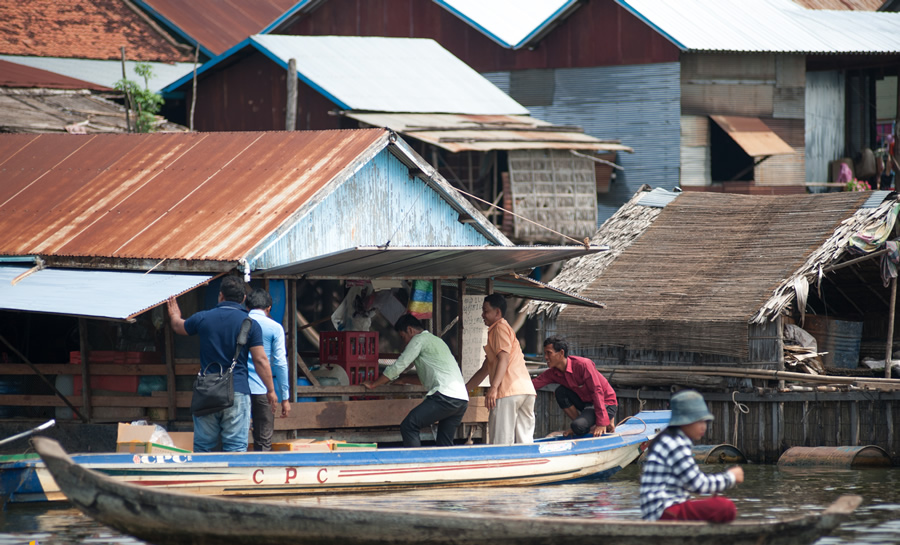 The Floating Village, Kompong Khleang, Cambodia. This fishing village sits on the Tonle Sap Lake that historically rises as much as five-fold during the rainy season. Houses are built both on stilts and as floating habitats. Photo credit: Yohann Legrand. (http://www.bbc.com/travel/story/20150915-where-houses-are-designed-to-float)
 Old City of Shibam, Yemen. This 16th century city of towers in the Wadi is an outstanding example of density and natural climate control. The city is on the United Nations World Heritage Danger List. Built of mud and located in a flood prone area, the city "remains at severe risk of major damage unless necessary preventive measures are taken...[involving] the conservation and use of Shibam oases, which are considered as the buffer zone of the property." Photo credit: Will De Freitas. (https://whc.unesco.org/en/list/192)
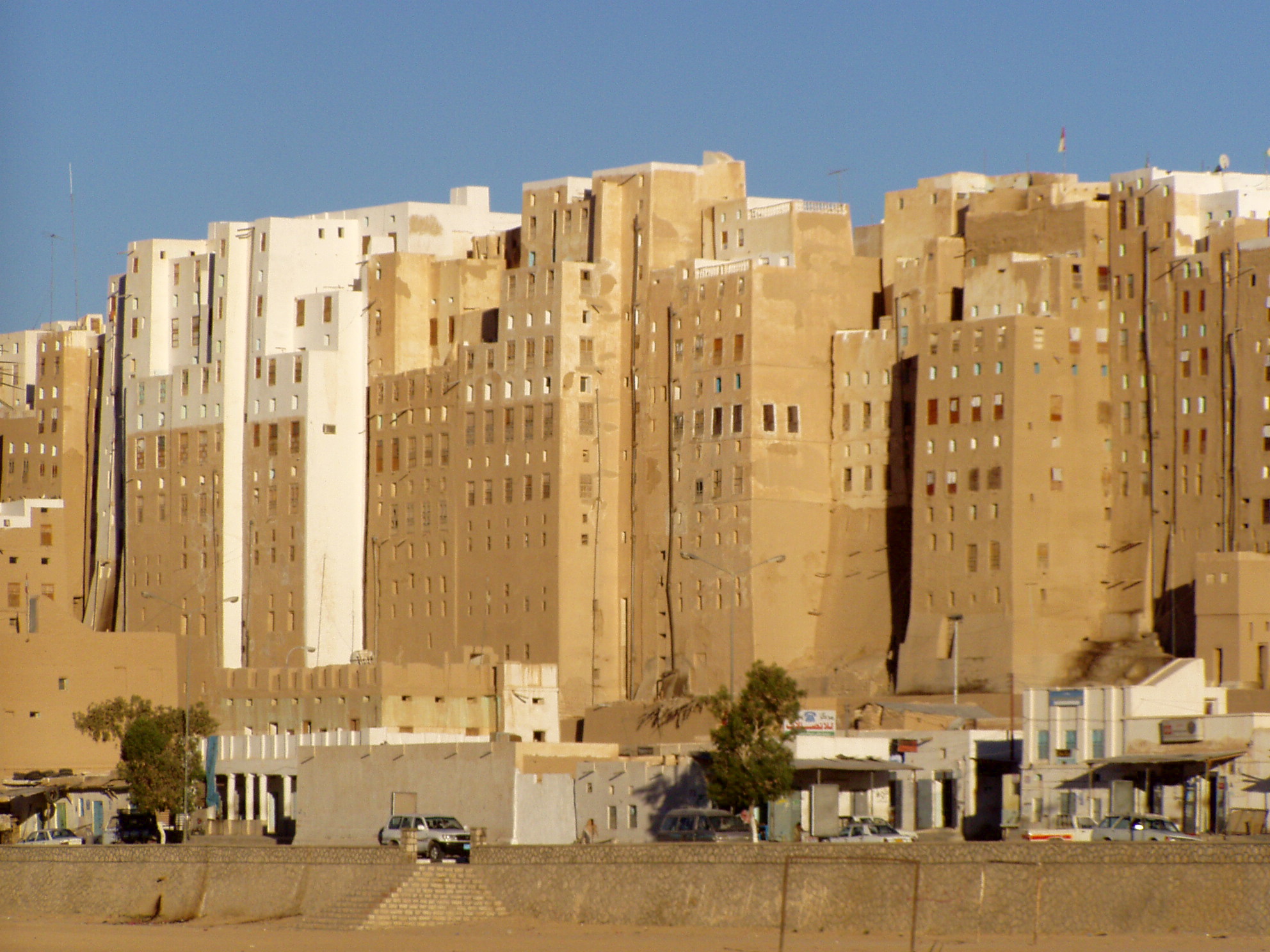 Old City of Shibam, Yemen. From the World Heritage listing: "Abandonment of the old agricultural flood management system in the wadi, the overloading of the traditional sanitary systems by the introduction of modern water supply combined with inadequate drainage, together with changes in the livestock management have all contributed to the decay of the city." Photo credit: Twiga_Swala
 Water Tank, Rweru Green Village, Rwanda, 2016. Rwanda's Green Fund invested in Rweru Green Village by providing water tanks, including this one which is connected to mains water to serve the community in times of drought. Photo Credit: Rwanda Green. (http://www.fonerwa.org/)
 Boston’s Resiliency Districts, Boston, Massachusetts, USA. The Norman B. Leventhal Center for Advanced Urbanism at MIT introduced a working concept of “resilient districts” for urban areas that are vulnerable to climate impacts. Resilient Districts include four central tenets 1) protecting critical infrastructure, 2) thickening regional soft systems, 3) transferring density to less vulnerable areas, and 4) encouraging landscape-based land uses in low laying areas. Image courtesy of Fadi Masoud. (http://lcau.mit.edu/)
 Shallow Dome Residence, Kalyani (near Kolkata), India. Designed by: Laurent Fournier. This is a unique example where a formal architectural project has incorporated incredible innovations taking place outside the professional world to help improve environmental performance of formal construction industry. "Shallow dome roofing" developed by informal masons from a village in northern India have made it possible to reduce use of steel and cement in building construction lowering its carbon footprint. Photo credit: Avikal Somvanshi
 Rainwater tank, Jalna, India. Designed by and built by: Neelakshi Joshi, 2018. Preparing for water variability by enabling houses to be water sufficient. Photo credit: Neelakshi Joshi.
 Ladder House, Auroville, India. Designed and built by: Avikal Somvanshi and Manu Gopalan, 2012. A fast-track eco-friendly dis-mountable housing prototype that can be used to provide semi-temporary housing post-natural disaster in tropical regions. Built by unskilled volunteers using bamboo ladders, coconut-coir ropes and recycled tetrapak sheets on a retired tracker-trolley the structure has been use since. Photo credit: Avikal Somvanshi.
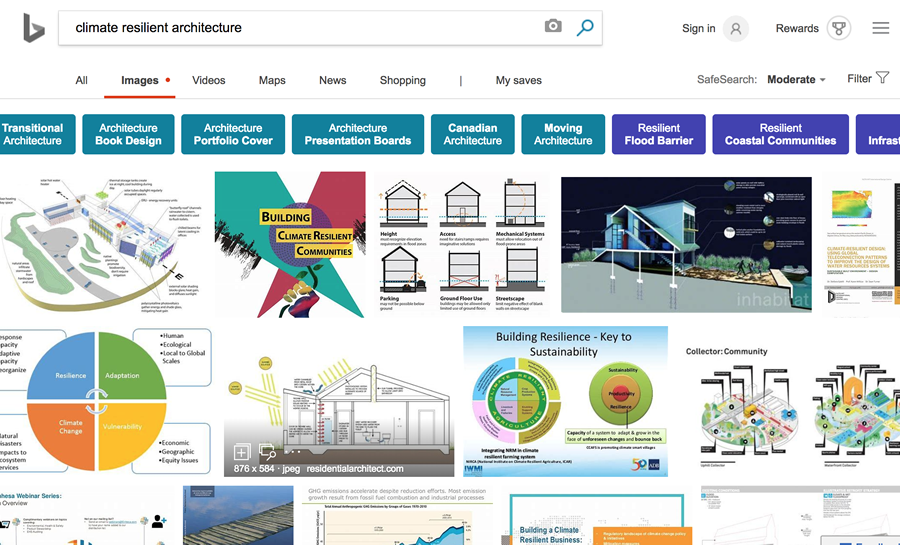 Bing Image Search: "Climate resilient architecture"
 Hunnarshala Foundation Office, Bhuj, Gujarat, India. Designed and built by: Sandeep Virmani and Kiran Vaghela. The campus is living laboratory of innovation and experiments with traditional building techniques and modern lifestyle requirements. The campus is splattered with examples how age-old construction practices can be brought to speed and help address the resource and resilience issues especially in rural areas. Photo credit: Avikal Somvanshi.
 Understanding community perceptions and preparations for a variable climate, 2017. Fieldwork conducted in emergent urban settlements of the Himalayas. Photo credit: Neelakshi Joshi.
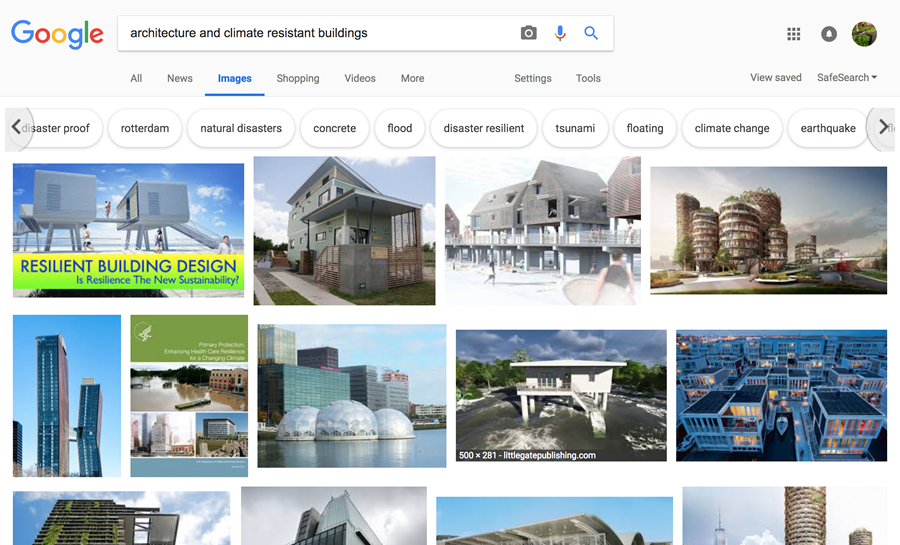 Google Image Search: "Architecture and climate resistant buildings"
1.jpg) Condominium 1 at the Sea Ranch, California, USA. Designed by: Donlyn Lyndon,. A wind-protected courtyard. Photo credit: Donlyn Lyndon.
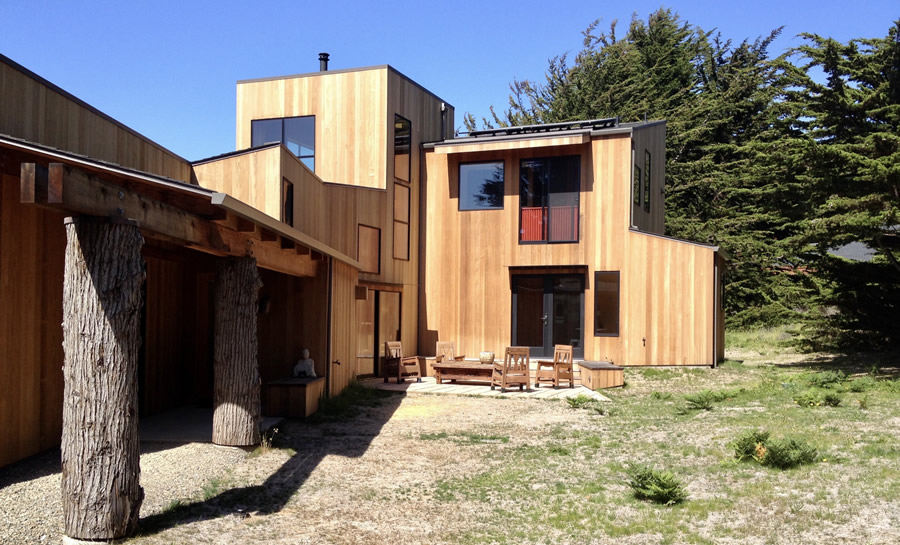 The Bowsprit House at the Sea Ranch, CA, USA. Designed by: Donlyn Lyndon FAIA, with Tomas Frank and Associates, Architects. Wind-sheltered courtyard with tower to gather light into the rooms of the house from all directions, and shading for south facing windows in the living spaces. Photo credit: Donlyn Lyndon.
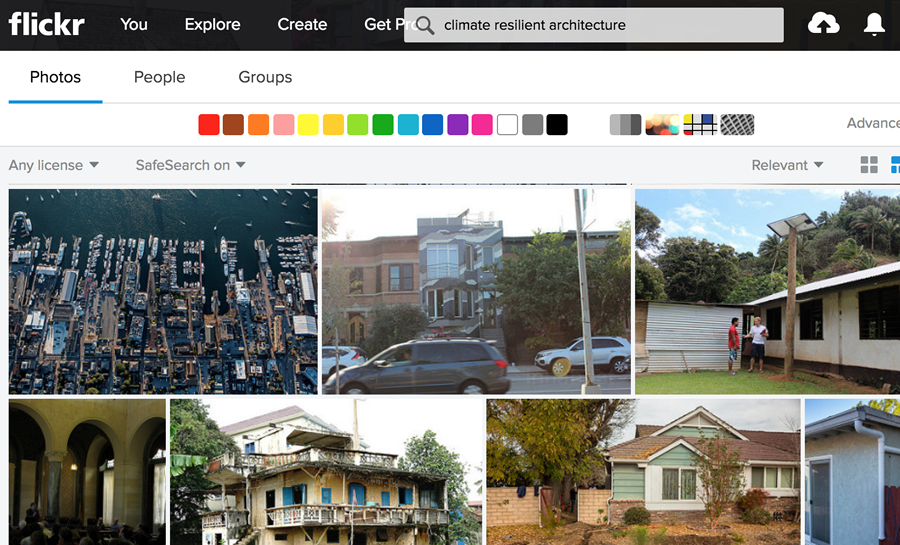 Flickr Image Search: "Climate resilient architecture"
|
|






















1.jpg)

